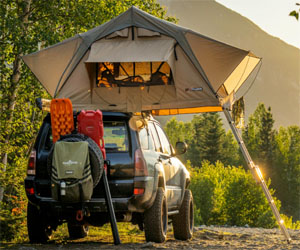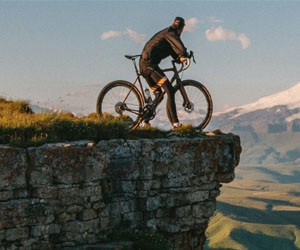


A Journey Of Connection And Discovery

In a world characterized by urbanization and the rapid pace of modern life, the call of nature remains a powerful and timeless force. The concept of exploring the heart of nature goes beyond a mere adventure; it is a profound journey of connection, self-discovery, and an opportunity to find solace in the beauty of the natural world.
A Deep Connection: Exploring the heart of nature is a quest to forge a deep and lasting connection with the environment. It is about immersing oneself in the serenity of forests, the grandeur of mountains, the tranquility of rivers, and the mystery of jungles. This connection transcends the superficial and taps into the primal bonds that exist between humans and the natural world.
Nurturing The Spirit: Nature has the remarkable ability to nurture the spirit. The act of exploring the heart of nature is an opportunity to find solace, peace, and tranquility. The sights and sounds of the wild provide a sense of rejuvenation and spiritual renewal, often needed in a world filled with noise and distractions.
A Symphony Of Senses: Nature engages all the senses. The scent of pine in the woods, the sound of a babbling brook, the feel of soft moss underfoot, the taste of fresh mountain air, and the sight of a starry night sky—each of these sensory experiences contributes to the profound connection that occurs when one explores the heart of nature.
Observing Biodiversity: One of the most fascinating aspects of exploring the heart of nature is the opportunity to witness biodiversity. From rare and exotic plant species to elusive wildlife, nature's richness is a constant source of wonder. Observing the delicate balance of ecosystems provides a newfound appreciation for the interconnectedness of all life.
Reconnecting With Simplicity: The heart of nature reminds us of the simplicity that exists in the natural world. In contrast to the complexities of modern life, nature offers a refuge of uncomplicated beauty. A solitary tree, a babbling brook, or a field of wildflowers can evoke a sense of wonder, underscoring the beauty in simplicity.
Self-Discovery: Exploring the heart of nature often leads to self-discovery. The challenges and obstacles faced in the wild, whether it's navigating unfamiliar terrain, enduring harsh weather, or confronting personal fears, can be transformative experiences. They reveal inner strengths and teach lessons that extend beyond the adventure.
Environmental Awareness: Engaging with the heart of nature fosters environmental awareness and responsibility. Witnessing the beauty of pristine landscapes fuels a desire to protect them. Many who explore nature become advocates for conservation and sustainable practices.
Mindfulness And Presence: Nature has a way of encouraging mindfulness and presence. In the heart of the wilderness, there is no room for distractions and multitasking. Instead, one is prompted to be fully present in the moment, appreciating the sights, sounds, and sensations around them.
The Gift Of Time: Exploring the heart of nature is a gift of time. It is an opportunity to slow down, reflect, and appreciate the world at a natural pace. It is a chance to leave behind the rush of everyday life and savor the moments that unfold in the wild.
Exploring the heart of nature is a journey that transcends geographical boundaries and spans generations. It is a universal quest to connect with the planet's most beautiful and untamed places, to find solace and rejuvenation, and to discover the profound magic that exists in the heart of nature. It is an invitation to answer the call of the wild, embark on a transformative adventure, and nurture the profound connection between ourselves and the natural world.
Unleashing The Thrill Of The Mountain
 2. Ollies And Nollies: Ollies are versatile tricks where the rider pops the board into the air by shifting their weight and pushing down on the tail. Nollies are similar but initiated by pushing down on the nose. These tricks are the foundation for more advanced maneuvers and add an element of creativity to your riding.
2. Ollies And Nollies: Ollies are versatile tricks where the rider pops the board into the air by shifting their weight and pushing down on the tail. Nollies are similar but initiated by pushing down on the nose. These tricks are the foundation for more advanced maneuvers and add an element of creativity to your riding.
3. Spins: Spinning is a dynamic component of snowboarding stunts. Start with 180-degree spins (half-cab) and work your way up to 360s, 540s, and even 720s. The key is using your upper body to initiate the spin while keeping your lower body aligned with the board.
4. Flips And Inverts: Flips and inverts take snowboarding to the next level. Tricks like backflips and front flips involve rotating your body while airborne. Inverts, such as handplants or hand drags, add an acrobatic twist to your riding. These tricks demand skill, precision, and a fearless spirit.
5. Rails And Boxes: Terrain park features like rails, boxes, and wallrides provide opportunities for grinding tricks. Practice slides, presses, and jibs on these features to enhance your trick repertoire. Sliding down a rail with style requires balance, precision, and confidence.
6. The 720 And Beyond: Mastering the 720 is a significant milestone for snowboarders. A 720 is a double spin where you complete two full rotations in the air. Once you've conquered the 720, you can explore more advanced spins like the 900 or even the elusive 1080.
7. Halfpipe Tricks: The halfpipe is a haven for advanced snowboarders. Here, you can attempt aerial tricks and spins. Learn to navigate the walls of the pipe and execute stylish tricks like the McTwist, the Method Air, and the Cab 720.
8. Grabs And Rotations Combined: Combining grabs with spins and flips can result in breathtaking and complex tricks. For example, a method grab while executing a backside 540 or a melon grab during a frontside 720 adds an artistic touch to your riding.
 One of the most captivating aspects of outdoor living is the opportunity to break free from the trappings of modern life. As we venture into the wilderness, we leave behind the constant notifications, the urban noise, and the pressures of our busy schedules. In the absence of technology, we find ourselves enveloped in the pure and untamed beauty of the environment, a setting where we can truly disconnect from the digital world.
One of the most captivating aspects of outdoor living is the opportunity to break free from the trappings of modern life. As we venture into the wilderness, we leave behind the constant notifications, the urban noise, and the pressures of our busy schedules. In the absence of technology, we find ourselves enveloped in the pure and untamed beauty of the environment, a setting where we can truly disconnect from the digital world.
The beauty of outdoor living reveals itself in the small and simple details that are often overlooked in our daily lives. It's in the subtle hues of a sunset, the rustling of leaves in the wind, the songs of birds welcoming the dawn, and the sound of flowing water in a pristine stream. As we immerse ourselves in the great outdoors, we gain a newfound appreciation for these nuances that often escape us in the urban rush.
Outdoor living is an invitation to reconnect with nature and rediscover our most primal instincts. Setting up camp, gathering firewood, and preparing meals over an open flame connect us to the essentials of survival. It fosters a sense of self-sufficiency, resilience, and resourcefulness, and in doing so, we deepen our understanding of the environment that sustains us.
 Safety First: Safety should be your top priority. Always wear a properly fitted helmet and gloves, and consider protective gear like knee and elbow pads. Ensuring that your bike has functioning brakes and reliable tires is essential for a safe ride.
Safety First: Safety should be your top priority. Always wear a properly fitted helmet and gloves, and consider protective gear like knee and elbow pads. Ensuring that your bike has functioning brakes and reliable tires is essential for a safe ride.
Choose The Right Trail: Start on beginner-friendly trails. Look for well-marked, easy-to-moderate paths that provide a comfortable introduction to mountain biking. These trails typically have fewer obstacles and gentler inclines, making them ideal for beginners.
Learn The Techniques: Mountain biking involves specific techniques that are important for both safety and enjoyment. Focus on body positioning, balance, and weight distribution to maintain control on uneven terrain. Learning to navigate obstacles, handle steep descents, and manage your speed on downhills is crucial.
Ride With Others: Riding with experienced friends or joining a beginner's group ride can be immensely helpful. You can learn from their experience and get tips on tackling obstacles or mastering techniques. Additionally, riding with others can provide a sense of camaraderie and motivation.
Gradual Progression: Don't rush your progression. As you gain confidence and skills, you can start exploring more challenging trails. It's important to understand your limits and gradually push them while staying within your comfort zone.
Be Mindful Of The Environment: Respect the natural environment and the trails you ride on. Follow trail rules and guidelines, and avoid disturbing wildlife or damaging the terrain. Leave no trace and help maintain the beauty of the outdoors.
Stay Hydrated And Fuel Up: Mountain biking can be physically demanding, so carry water and energy snacks. Staying hydrated and nourished is essential for endurance on the trail.






A Model For Sportsmanship
 Spirit of the Game, as it's known in Ultimate circles, is a central tenet of fair play. It encourages players to uphold the highest standards of integrity and respect. The official rules of Ultimate state that "highly competitive play is encouraged, but never at the expense of the bond of mutual respect between players, adherence to the agreed-upon rules of the game, or the basic joy of play." This reflects the idea that winning is important, but not at the cost of the sport's core values.
Spirit of the Game, as it's known in Ultimate circles, is a central tenet of fair play. It encourages players to uphold the highest standards of integrity and respect. The official rules of Ultimate state that "highly competitive play is encouraged, but never at the expense of the bond of mutual respect between players, adherence to the agreed-upon rules of the game, or the basic joy of play." This reflects the idea that winning is important, but not at the cost of the sport's core values.
The concept of Spirit of the Game goes beyond the written rules and extends to the spirit in which the game is played. Players are expected to acknowledge their own infractions and resolve disputes amicably with their opponents. This self-policing approach creates an environment of trust and sportsmanship that is rare in competitive sports.
Ultimate Frisbee also places a strong emphasis on gender equity and mixed-gender play. Teams are required to maintain a balanced gender ratio on the field, promoting inclusivity and equality. This commitment to fair play extends to creating opportunities for all players, regardless of gender, to contribute to the game and succeed.
The fair play values of Ultimate extend to the sidelines as well, with spectators and coaches encouraged to support teams and players in a positive and respectful manner.
An Adventure Beyond The Ordinary
 Mountain biking is more than just a physical activity; it's a mental challenge as well. Riders must constantly adapt to changing terrains, make quick decisions, and maintain focus. The need to read the trail ahead, choose the right line, and navigate obstacles requires a combination of skill and problem-solving that keeps the mind engaged and sharp.
Mountain biking is more than just a physical activity; it's a mental challenge as well. Riders must constantly adapt to changing terrains, make quick decisions, and maintain focus. The need to read the trail ahead, choose the right line, and navigate obstacles requires a combination of skill and problem-solving that keeps the mind engaged and sharp.
What sets mountain biking apart is the diverse range of terrains it offers. Riders can explore lush forests, conquer arid deserts, climb mountain slopes, or take on technical urban trails. This variety ensures that there's a trail for every skill level and a challenge for every rider, from beginners to seasoned pros.
The thrilling world of mountain biking also encourages a deep connection with the outdoors. It takes riders to remote and breathtaking natural settings that are often inaccessible by other means. From the tranquility of forest trails to the majesty of mountain vistas, mountain biking provides a front-row seat to the beauty of the natural world.
Moreover, mountain biking fosters a sense of camaraderie among riders. It's a sport that often brings people together, whether it's friends sharing the excitement of a weekend ride or joining a larger community of like-minded enthusiasts. The mutual passion for exploration and adventure creates lasting bonds and memorable experiences.